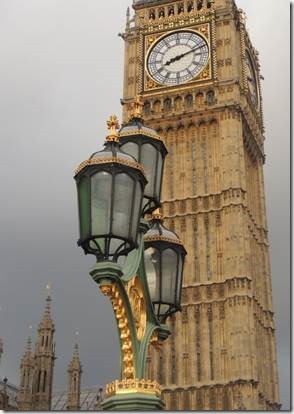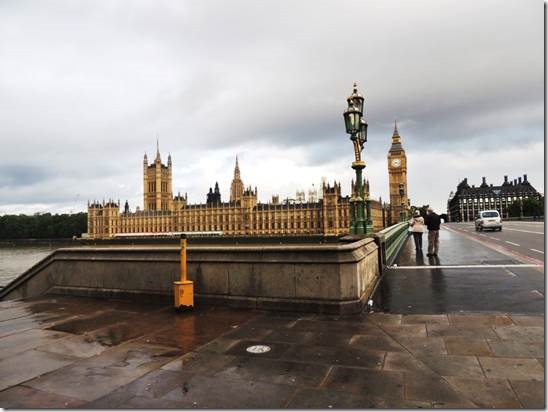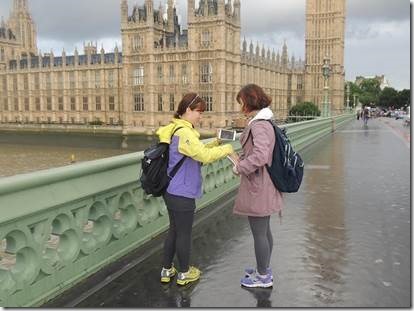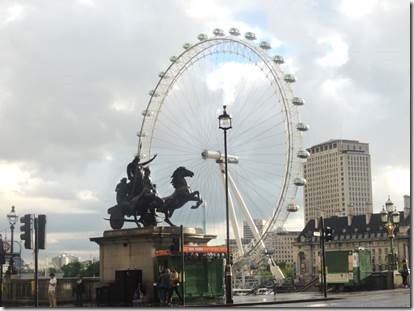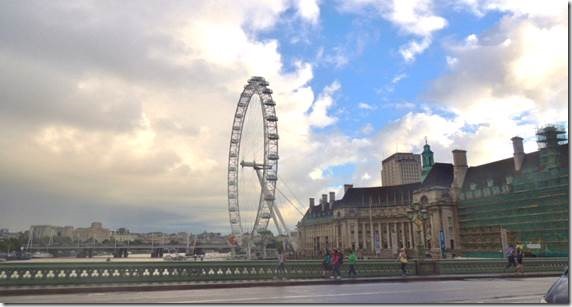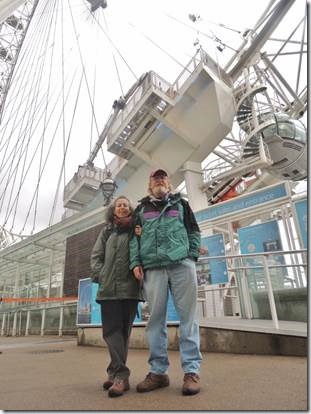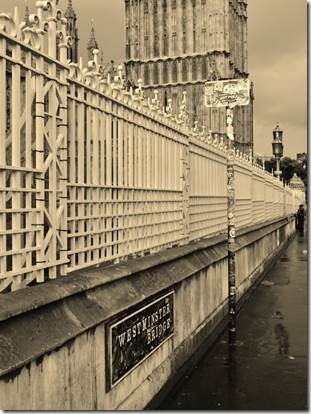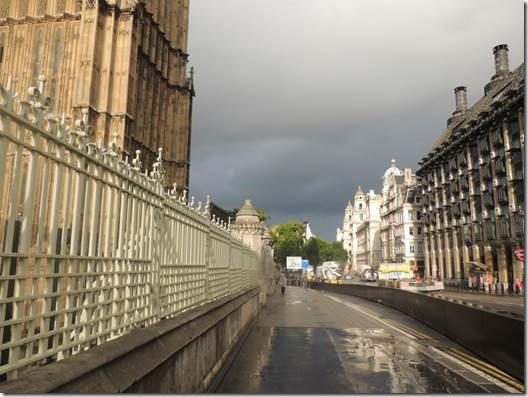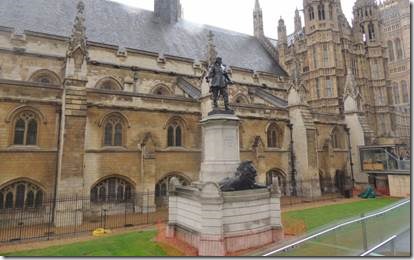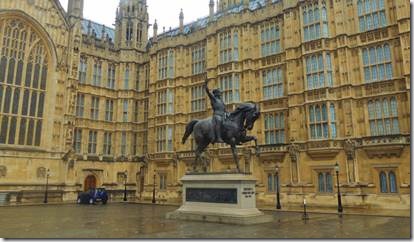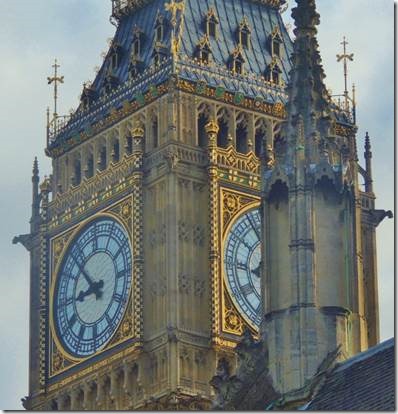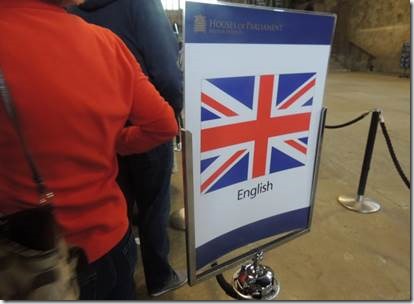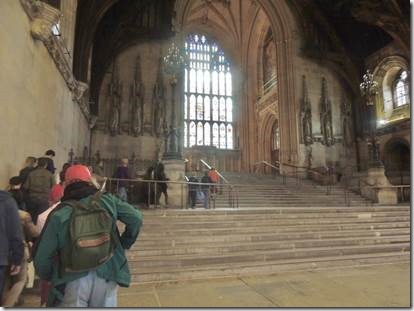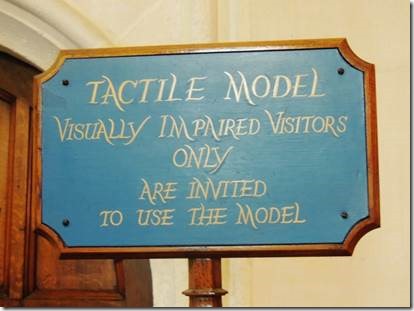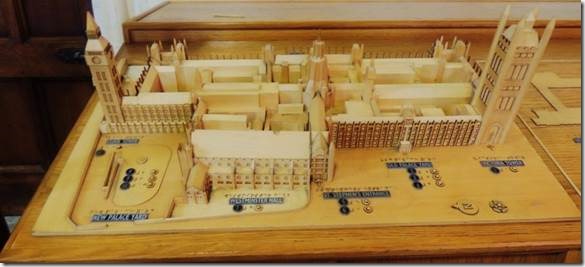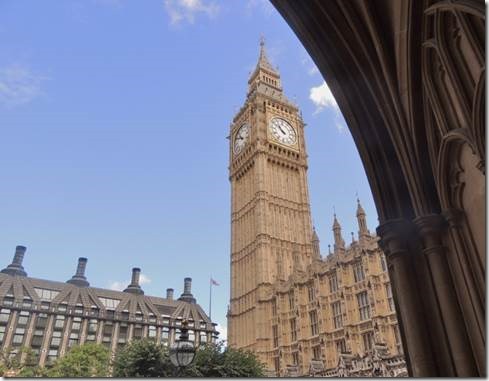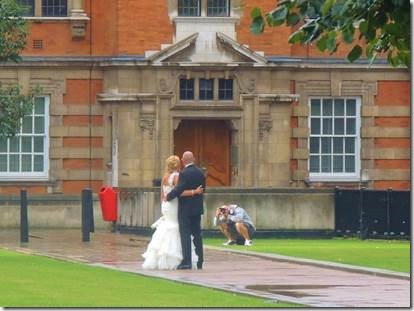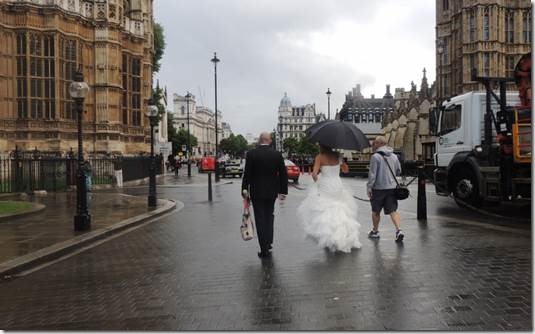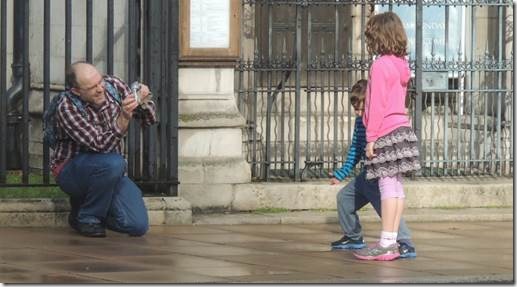Cheers,
Today our good pals from Roanoke, Jane and Peter Field came to visit us. They are here in the UK for a conference and had some time to spare. We were so glad they could come. Funny that we rarely have visitors and in the space of a week have had visitors from Roanoke twice. We love it.
While our friend John was here we visited Parliament. No photos are allowed but the tour was quite interesting and the Parliament website has lots of info. Apparently when an election is called each of the 800 or so members has 1 Month to campaign. Wouldn’t it be lovely if we had that kind of law in the US. Think of the money that would be saved!
Wonder of wonders the sun came out today long enough for me to wash and line dry our sheets!
And I’ve made friends with the mom and baby coot that live just under the dock behind our boat. We have some Honey Nut Krispy’s that Randal bought in desperation one day in Tunisia and that’s what I feed them. The mom picks them up and then feed them to the baby (quite a big baby if you ask me.) When I hear them calling I go out to feed them. I’ve taken a few photos but they’re not great. I’ll try to get some good enough share.
Ru
Visit to Parliament
|
8:10 Big Ben time Our tour was scheduled for 9:15 am and we were to be 20 minutes early. We arrived quite a bit early so went off for a walk. |
|
Looking back at the complex that makes up Parliament |
|
Now you take my pictuer….. |
|
Boadicea and the London Eye Millennium Wheel “In the Victorian sculptor Thomas Thornycroft’s splendidly fierce statue placed by Westminster Bridge in 1902, the rebel queen Boudicca – or Boadicea – is a heroic patriot. She stands triumphantly in her war chariot, a personification of British freedom and defiance. The real Boudicca led her people, the Iceni, in a rebellion against Roman rule in AD60 or 61. She destroyed London, Colchester and St Albans and massacred their inhabitants. Hastening back from a campaign in Wales, the Roman governor defeated and slaughtered the Iceni in the tribe’s last battle. Boudicca probably killed herself on the battlefield.” |
|
Not in a million years will anyone get me onto this gigamtic bicycle wheel : this is as close as I get! |
|
Walking back across Westminster Bridge in the drizzle toward Big Ben : it alternated sun and drizzle making for interesting color. |
|
I’m making myself crazy trying to figure out what the white building on the right is : I give up. |
|
Oliver Cromwell had his faults; but he invited the Jews back to England after their expulsion in 1290 by Edward 1. They were invited back by Cromwell in 1656. http://www.bbc.co.uk/ |
|
Richard Lion Heart We encountered him in North Cyprus at Kyrenia Castle and St. Hilarion Castle in North Cyprus on his way to the Crusades. As we travel we continually find heroes in one country are seen as villains in other countries. |
|
Standing in the ticket line 20 minutes early for our 9:15 tour. We definitely heard it gong gong gong on the hour. “The name Big Ben is often used to describe the tower, the clock and the bell but the name was first given to the Great Bell. The Elizabeth Tower was completed in 1859 and the Great Clock started on 31 May, with the Great Bell’s strikes heard for the first time on 11 July and the quarter bells first chimed on 7 September.” |
|
Our tour time was 9:15 and our language of choice: English We actually missed our slotted tour time because I was held up at the entrance as they went through my pack a zillion times thanks to a barrett in a small bag in my pack. We took a slightly later tour. The tour lasted almost two hours of walking or standing. When we entered the House of Lords and the House of Commons we were allowed to lean on the seats, but not to sit down. Not being a tax payer I couldn’t complain too much, but had I been one, I might have been quite annoyed having paid for and maintained those same seats. “Central Lobby,(between the two houses) is where constituents come to ‘lobby’ their MPs and visitors come to attend meetings with MPs and Members of the Lords.” http://www.parliament.uk/ Member’s Lobby Statues In Member’s Lobby, by the doors to the Debating Chamber, is a collection of statues and portrait busts of those who served the Nation as Prime Minister during the 20th century. In recent years Baroness Thatcher and Sir John Major have been added, but until now there were three historic gaps in the series….. Our guide told us that not only was the statue of Margaret Thatcher the first female statue to be added but the first statue of a Prime Minister not dead for 10 years. The person who lobbied for the change was totally opposed to all of Thatcher’s policies. His reasoning was that when the revolution came and the statues were attached, he wanted her head to go first; at least that’s the story our guide told. http://www.parliament.uk/ shows the statue of Churchill inspecting the damage of the Parliament building The Churchill arch The arch leading into the Chamber itself is known as the Churchill arch. It was Winston Churchill who suggested that the arch be rebuilt from the original bomb-scarred stone as a monument to the ordeal of war, and as a reminder to future generations of the fortitude of those who stood firm through those times. The archway is flanked by statues of David Lloyd George and of Churchill himself, the prime ministers of Britain during the First and Second World Wars respectively. One foot on each statue has been burnished bright by the hands of MPs, who touch them for luck as they enter or exit the Chamber. Opposite Churchill stands the statue of Baroness Margaret Thatcher, the first person to be so honoured by the House whilst still living. http://www.parliament.uk/ Stop touching Churchill or Thatcher, MPs told (their statues, that is) Touching statues of the former prime ministers is a gesture believed to bring good luck but is causing wear and tear. The tradition of politicians touching images of former prime ministers as they enter the Commons chamber is a gesture believed to bring good luck. But the parliamentary authorities have warned that the statues of Winston Churchill, Clement Attlee, Margaret Thatcher and David Lloyd George are now “seriously under threat” from the repeated wear and tear. A "do not touch" sign will be put permanently on display and new MPs will not be informed about the tradition. |
|
Westminster Hall : the only part of the complex where photos were allowed. “Westminster Hall is the oldest building on the Parliamentary estate. What makes it such an astonishing building is not simply its great size and the magnificence of its roof, but its central role in British history. In and around the Hall, grew up the major institutions of the British state: Parliament, the law courts and various government offices. Closely involved in the life of the nation since the 11th century, a journey through the Hall’s past is a journey through 900 fascinating years of our history.” The Second World War and after Having survived fire and death-watch beetles, the Hall’s next enemy was incendiary bombs during the Second World War. Worst attack The worst attack was on the night of 10 May 1941, when the Commons Chamber and Westminster Hall were both hit by bombs. The Chamber rapidly became an inferno, while flames began to spread to the hammer-beams of the Hall. The Hall was saved by the decisiveness of Walter Elliot, a former Cabinet minister, who had hurried over from his nearby home. He was told by the Fire Service that it would be impossible to save both the Hall and the Chamber – it had to be one or the other. He had no hesitation in advising them to concentrate on saving the medieval Hall. Irreplaceable After all, as he remarked to a friend years later, they could always build a new Commons Chamber, while the Hall was irreplaceable. Not content with merely giving advice, Elliot personally smashed with an axe an opening through the locked doors of the Hall, so that hoses could be brought inside to play on the burning roof. The Hall was soon out of danger, but the Commons was reduced to ashes and rubble. Repairs to the Hall The south window of the Hall, built by Charles Barry, had been destroyed in an earlier raid in 1940. The new window now contains the coats-of-arm or monograms of the members and servants of both Houses who fell during the war, and below the window is a memorial to those who were killed during the First and Second World Wars. Another programme of repair in 1949-50 resulted in the replacement of another five per cent of the roof’s timber, and the six statues of kings were conserved between 1988 and 1994. A new phase of repairs to the Hall’s floor and steps took place in 2005-06. |
|
Brilliant and thoughtful idea |
|
Leaving the Parliament building at 10:50. |
|
While waiting in the ticket line I took some photos of this bride and groom |
|
Bright white on a gray day, though just a few minutes later the sun was shining. |
|
A dad capturing a moment with his kids |

